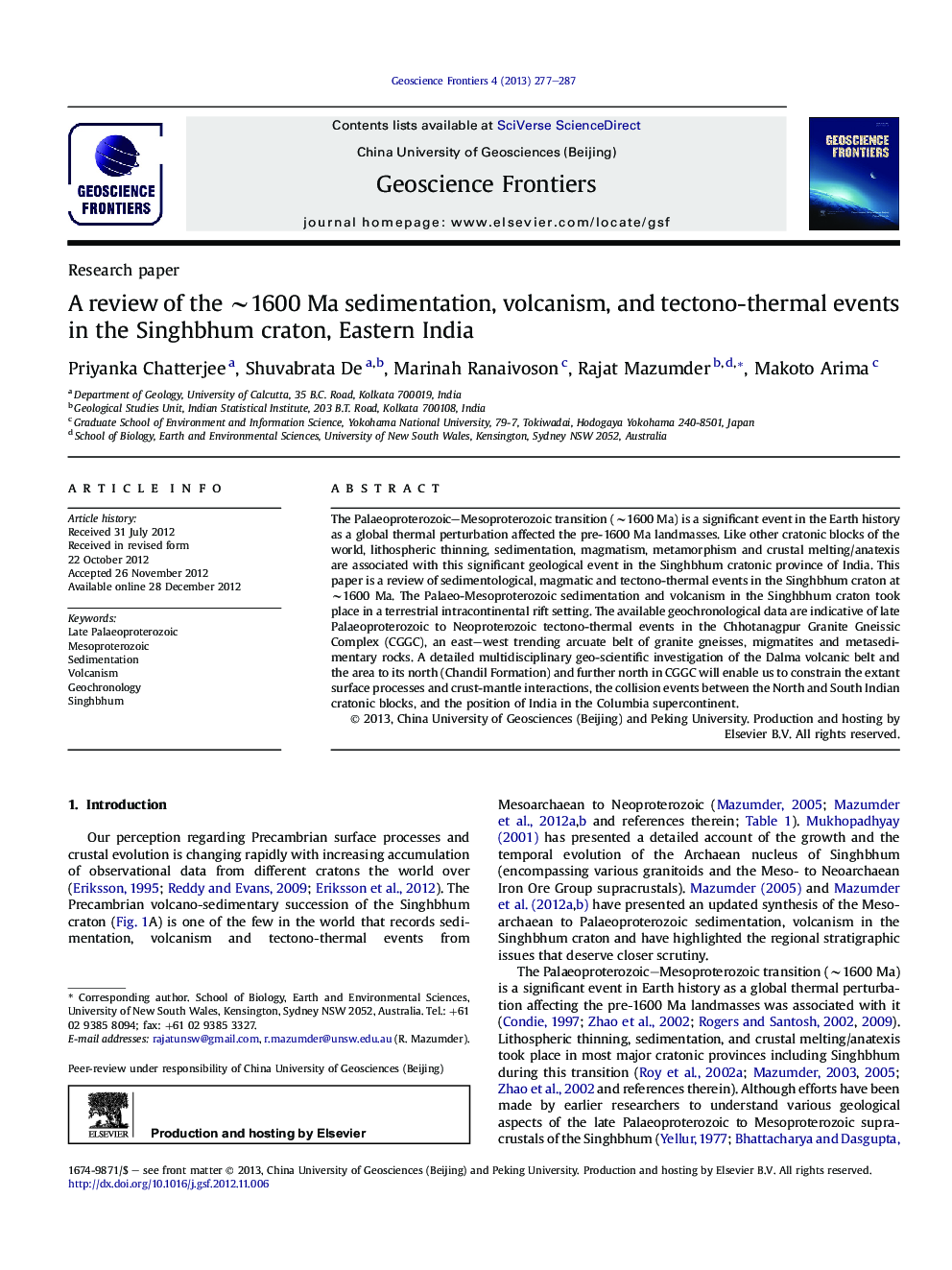| Article ID | Journal | Published Year | Pages | File Type |
|---|---|---|---|---|
| 4681592 | Geoscience Frontiers | 2013 | 11 Pages |
The Palaeoproterozoic–Mesoproterozoic transition (∼1600 Ma) is a significant event in the Earth history as a global thermal perturbation affected the pre-1600 Ma landmasses. Like other cratonic blocks of the world, lithospheric thinning, sedimentation, magmatism, metamorphism and crustal melting/anatexis are associated with this significant geological event in the Singhbhum cratonic province of India. This paper is a review of sedimentological, magmatic and tectono-thermal events in the Singhbhum craton at ∼1600 Ma. The Palaeo-Mesoproterozoic sedimentation and volcanism in the Singhbhum craton took place in a terrestrial intracontinental rift setting. The available geochronological data are indicative of late Palaeoproterozoic to Neoproterozoic tectono-thermal events in the Chhotanagpur Granite Gneissic Complex (CGGC), an east–west trending arcuate belt of granite gneisses, migmatites and metasedimentary rocks. A detailed multidisciplinary geo-scientific investigation of the Dalma volcanic belt and the area to its north (Chandil Formation) and further north in CGGC will enable us to constrain the extant surface processes and crust-mantle interactions, the collision events between the North and South Indian cratonic blocks, and the position of India in the Columbia supercontinent.
Graphical abstractFigure optionsDownload full-size imageDownload as PowerPoint slideHighlights► Discusses ∼1600 Ma sedimentation and volcanism in the Singhbhum craton, India. ► ∼1600 Ma terrestrial sedimentation. ► ∼1600 Ma tectonic processes in the Singhbhum craton.
